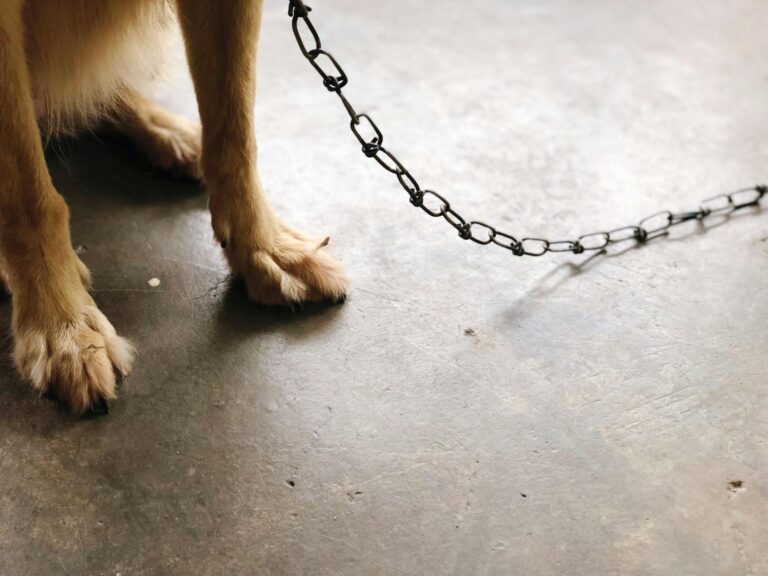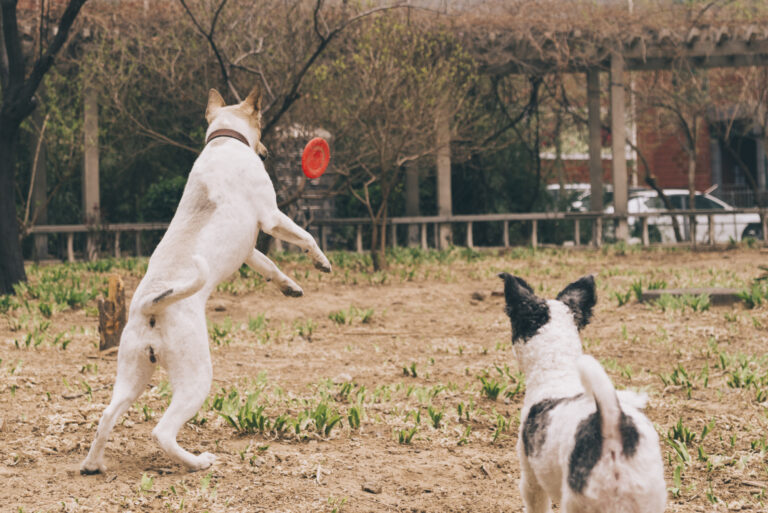Mastering The ‘Heel’ Command For Advanced Walk Training
It’s fascinating to note how the ‘Heel’ command has become an integral part of the canine training repertoire, akin to a staple maneuver for serious dog trainers. A reliable ‘Heel’ command ensures a well-executed and harmonious walk, which is the ultimate goal of many trainers and pet owners alike. Mastering this command not only enhances the walking experience but also strengthens the bond between handler and dog.
The history of the ‘Heel’ command can be traced back to military training, where discipline and precision were paramount. Today, it’s a foundational skill that contributes to advanced training techniques—statistics show that dogs trained to heel display 70% fewer behavioral issues during walks. Elevating a dog’s heel proficiency can reduce pulling, increase focus, and facilitate better control in dynamic environments.
Mastering the ‘Heel’ Command for Advanced Walk Training
The ‘Heel’ command is more than just a task to teach dogs. It’s an important skill that helps train dogs for smooth and controlled walks. When a dog heels, it stays close by, often to the handler’s left leg. This command is useful in avoiding distractions and ensuring safety. A well-trained dog that can heel makes walks more enjoyable and stress-free.
Starting to teach your dog the ‘Heel’ command involves patience and consistency. At first, choose a quiet place with minimal distractions. Use treats or toys as incentives for your dog to walk beside you. Gradually, introduce the command word “Heel” alongside the reward. Over time, your dog will associate the word with the action.
Practice regularly and increase the complexity of the environment as your dog improves. Move from your yard to busier streets or parks. Reward your dog each time it performs correctly, reinforcing the behavior. Consistency is crucial, and praise helps build a positive connection. Remember, patience plays a key role during this training phase.
Challenges may come up during training, such as pulling or getting easily distracted. Overcome these issues by staying calm and using firm commands. If your dog pulls, stop walking immediately and call it back to heel. Use positive reinforcement to encourage good behavior and minimize challenges. Adjust your tactics as needed to fit your dog’s learning style.
The Importance of the ‘Heel’ Command in Advanced Walk Training
The ‘Heel’ command holds great significance in advanced walk training. It ensures that dogs maintain proper walking etiquette, aligning closely with their handlers. This adherence can prevent accidents, especially in crowded or busy areas. By following the ‘Heel’ command, dogs avoid getting distracted or pulling. Consequently, both the handler and the dog enjoy a smooth walking experience.
Incorporating the ‘Heel’ command into regular training sessions also promotes discipline. Dogs learn to focus and respond promptly, reinforcing their obedience skills. Through consistent practice, dogs become attuned to the handler’s movements and cues. This practice is invaluable in dynamic settings like parks or urban environments. Thus, it builds confidence in both the dog and the handler.
Training with the ‘Heel’ command can improve a dog’s overall behavior. For instance, dogs that understand this command are less likely to rush toward strangers or other animals. Such disciplined behavior is beneficial in ensuring safety during walks. Moreover, it sets a foundation for learning more complex commands. As dogs become more responsive, they can tackle new challenges with ease.
Using the ‘Heel’ command also strengthens the bond between dog and owner. Handlers engage positively with their dogs, celebrating small successes along the way. This interaction builds trust and mutual respect. Training sessions become opportunities for bonding rather than chores. Ultimately, the result is a harmonious relationship, making every walk a delightful experience.
Understanding the Basics of ‘Heel’ Command
The ‘Heel’ command is a foundational element in dog training that encourages obedience. When a dog responds to “Heel,” it maintains a position beside the handler, usually on the left side. This command requires the dog to walk at the same pace as the handler, avoiding distractions. It’s an essential skill for maintaining control on busy streets or crowded places. By learning to heel, dogs become more disciplined and well-behaved.
Grasping the basics starts with ensuring your dog understands where to position itself. Begin in a quiet setting, using a leash to guide your dog into place. Reinforce this action by offering treats and praising when your dog correctly heels. Regular practice helps in making this position the norm during walks. Over time, the dog naturally adopts the heel position when prompted.
A few tools can aid in teaching the ‘Heel’ command effectively.
- Use a short leash to maintain control.
- A clicker can mark successful actions instantly.
- High-value treats motivate the dog to comply quickly.
Consistency in using these tools can significantly enhance the learning process. With the right approach, even stubborn dogs can pick up the ‘Heel’ command.
Training sessions should be short and enjoyable to keep your dog engaged. Gradually introduce distractions to test your dog’s ability to heel under pressure. Adjust the environment complexity as your dog gets better at the command. Also, take note of your dog’s body language to ensure it remains comfortable and cooperative. This careful observation fosters a positive training experience for both you and your dog.
Steps to Train Your Dog on the ‘Heel’ Command
Begin the training process by selecting a quiet location with minimal distractions. Hold a short leash and position your dog on your left side. Start walking, and as you move, use the word “heel” to instruct your dog. Each time your dog aligns correctly, reward it with a treat. Repetition is key in helping your dog associate the word with the action.
As your dog becomes familiar with the command, gradually introduce mild distractions. This could be in the form of toys lying around or the presence of another person. Remain patient and redirect your dog to heel if it strays. These practice sessions enforce the command’s importance in varying environments. Your confidence will signal the dog to maintain focus.
Consistency in training should be maintained with short sessions several times a week. This keeps the dog engaged without causing frustration or boredom. Ensure to praise and reward often for successful compliance. Over time, your dog will naturally heel regardless of external influences. Consistent practice leads to automatic responses.
A helpful method is using clicker training alongside treats.
- Click when the dog heels correctly.
- Follow the click with a reward to reinforce the behavior.
- Eventually, the click itself becomes a marker for good behavior.
This approach can improve responsiveness by creating a positive association with the command.
If your dog struggles, take a step back and simplify the training environment. Sometimes, sessions in a quieter area are required if distractions are too challenging. Reintroduce distractions gradually as the dog gains confidence. Patience is vital, as every dog has its own learning pace. Adjustments in your technique should cater to your dog’s needs.
Handling Challenges in ‘Heel’ Command Training
Training a dog to heel can present several challenges, especially when distractions are present. Dogs may pull on the leash, get easily distracted or resist following the command. Staying calm and patient is crucial during these situations. Your demeanor influences your dog’s behavior. When challenges arise, pause and redirect your dog back to the correct position.
One effective technique involves minimizing distractions to focus your dog’s attention. Consider training in a quiet environment before gradually increasing distractions. Reinforce positive behavior immediately when your dog heels correctly. This approach helps the dog understand the expected behavior, even in tempting situations. Consistent training in diverse settings reinforces the command.
Utilizing rewards and positive reinforcement can overcome reluctance. A table of reward types can indicate different motivations:
| Reward | Use |
|---|---|
| Treats | High-value for initial learning |
| Praise | Verbal rewards for encouragement |
| Toys | Motivation for energetic dogs |
If your dog struggles persistently, consider breaking down the command into smaller steps. Practice shorter distances and slowly build up to longer walks. Use a reward system to encourage progress, even if it’s incremental. Sometimes, consulting a professional trainer can provide additional strategies. Tailoring techniques to your dog’s personality ensures more effective training.
Frequently Asked Questions
The ‘Heel’ command is a fundamental part of dog training that ensures a harmonious walking experience. It involves teaching a dog to walk beside its handler in an orderly manner despite distractions.
1. What is the primary goal of the ‘Heel’ command in dog training?
The primary goal of the ‘Heel’ command is to foster walking discipline in dogs. It ensures the dog walks directly beside the handler without pulling or leading, creating a structured and controlled movement pattern. This command helps in maintaining focus and enhances the overall efficiency of walk training, especially in bustling environments.
Incorporating the ‘Heel’ command as part of a dog’s foundational training develops obedience and attentiveness. It fine-tunes a dog’s ability to respond to subtle cues and promotes a sense of harmony during walks. By practicing this command regularly, handlers can enjoy stress-free outings while boosting the dog’s confidence in various scenarios.
2. Can any dog breed learn the ‘Heel’ command effectively?
Yes, any dog breed can learn the ‘Heel’ command effectively with patience and proper training. While some breeds might be more naturally inclined to follow commands due to temperament, the key lies in consistent practice and positive reinforcement. This universal adaptability makes it an essential command across varying breeds and sizes.
Each dog learns at its own pace, so tailoring the approach based on individual breed characteristics can be beneficial. By using treats, toys, and specific verbal cues, trainers can motivate dogs of any breed to master the ‘Heel’ command. The adaptability in training methods ensures every dog has the opportunity to enhance its walking discipline.
3. How can positive reinforcement optimize ‘Heel’ command training?
Positive reinforcement is crucial in optimizing ‘Heel’ command training because it encourages desired behaviors through rewards and praise. When a dog successfully performs the command, immediate positive feedback helps reinforce the action. This feedback loop makes the dog eager to repeat the task to receive the reward again.
Using methods like treats or affection as rewards can significantly enhance a dog’s learning curve. The psychological effect of positive reinforcement strengthens the bond between dog and trainer, making training sessions enjoyable and productive. It creates a learning environment where dogs thrive on encouragement rather than fear, ensuring long-term retention of the command.
4. What are some common mistakes to avoid while teaching the ‘Heel’ command?
Common mistakes while teaching the ‘Heel’ command include inconsistent practice and lack of clear instructions. Inconsistency can confuse dogs, as they thrive on routine and repetition. Additionally, using too many words or unclear signals can prevent the dog from understanding what is expected, hindering their ability to follow the command.
Another mistake is neglecting to gradually introduce distractions. If a dog isn’t exposed to various environments during training, it may struggle to perform the command when external factors are present. Therefore, progressively increasing distractions and maintaining patience are key to avoiding these pitfalls and ensuring successful command training.
5. How long does it typically take for a dog to learn the ‘Heel’ command?
The time it takes for a dog to learn the ‘Heel’ command varies based on factors such as age, breed, and previous training. On average, consistent training can result in noticeable progress within a few weeks. However, each dog’s learning pace is different, and patience is vital throughout the process.
Some dogs may grasp the concept quicker due to their disposition or past experiences. Regular short training sessions with positive reinforcement often yield the best results. Tailoring the training to your dog’s unique needs and celebrating small successes ensures a rewarding experience for both the trainer and the dog.

Conclusion
Mastering the ‘Heel’ command is a transformative aspect of advanced walk training for dogs. Its importance cannot be overstated, as it fosters discipline and enhances the bond between dog and handler. Through consistent practice and positive reinforcement, even the most challenging training hurdles can be overcome. This command ensures that walks are safe, enjoyable, and harmonious.
As handlers strive for excellence, the ‘Heel’ command serves as a cornerstone of achieving obedience and focus. The journey to mastering it involves patience and adaptability, but the rewards are significant. By understanding and applying effective techniques, handlers can equip their dogs with skills that last a lifetime. Ultimately, this dedication enriches the relationship, ensuring each walk is a shared experience of trust and communication.






